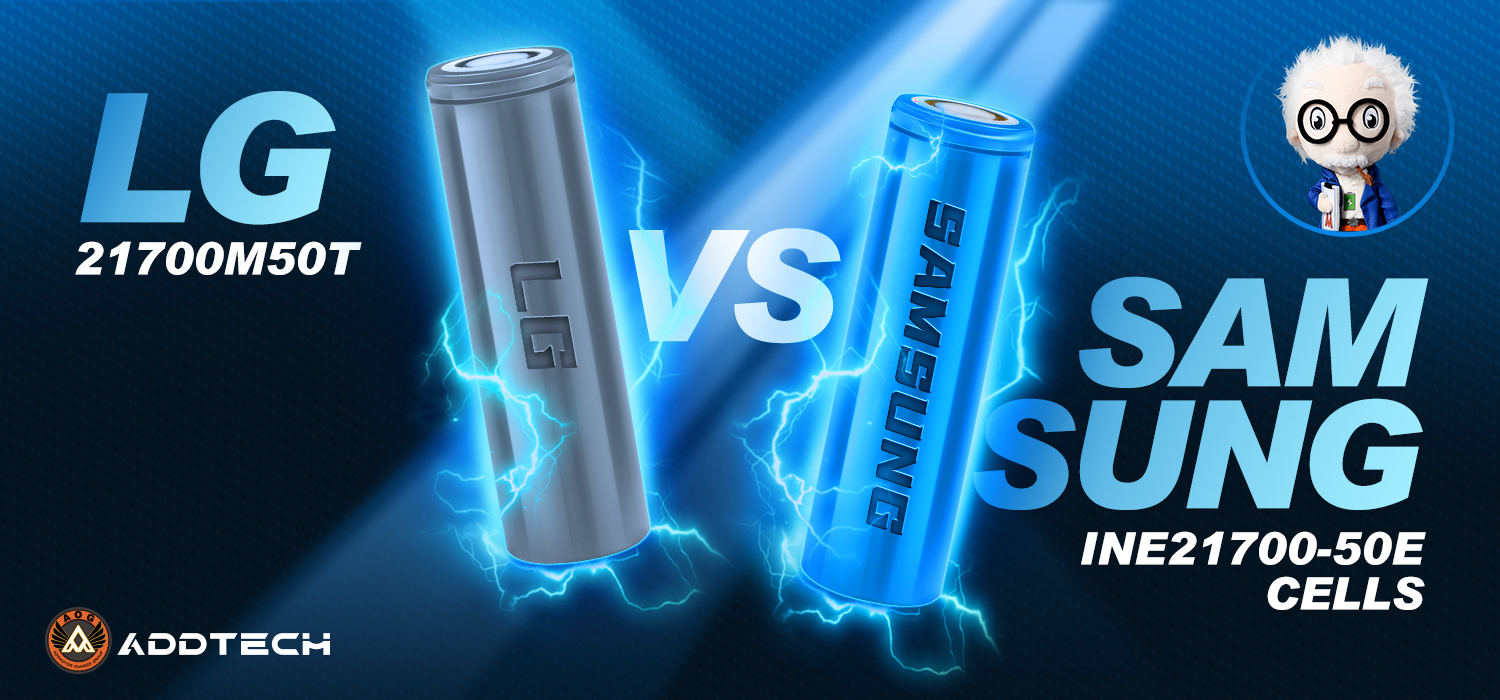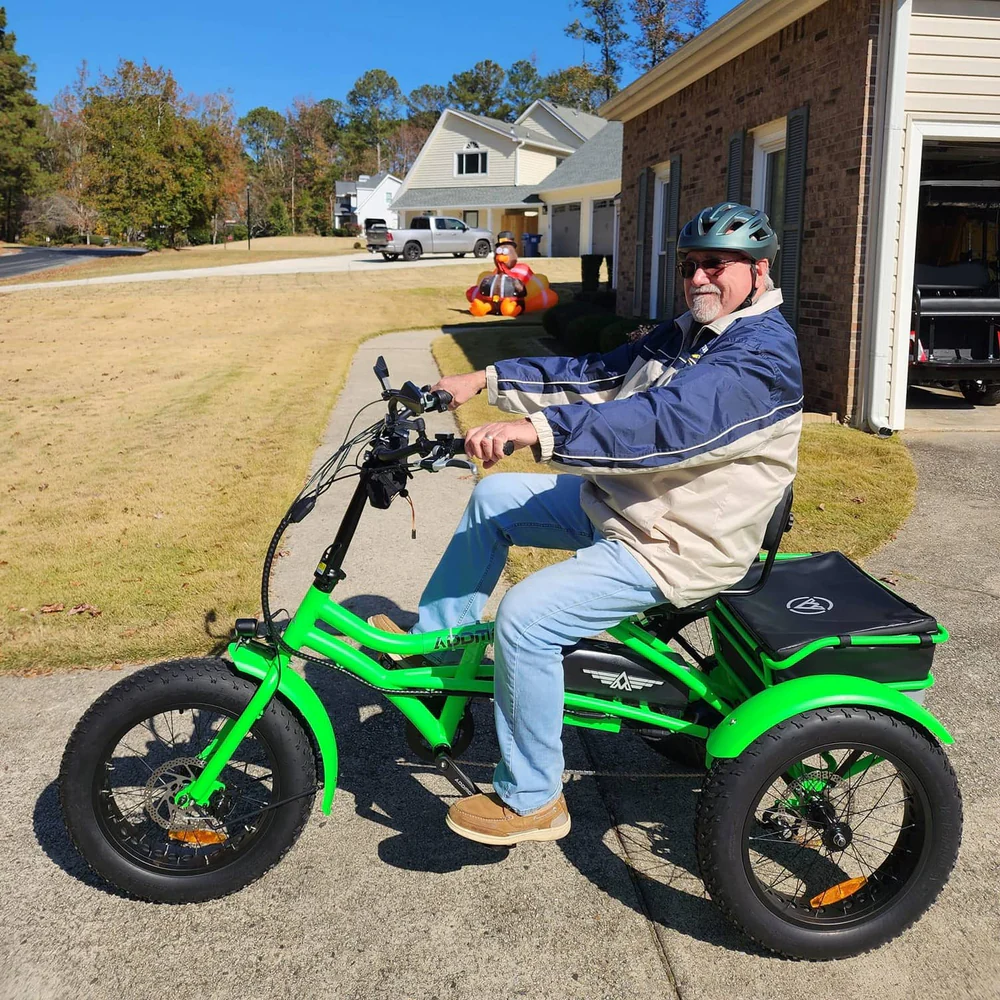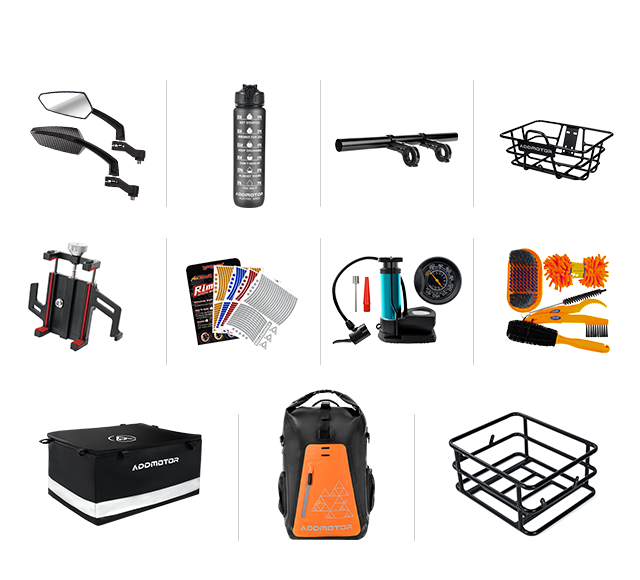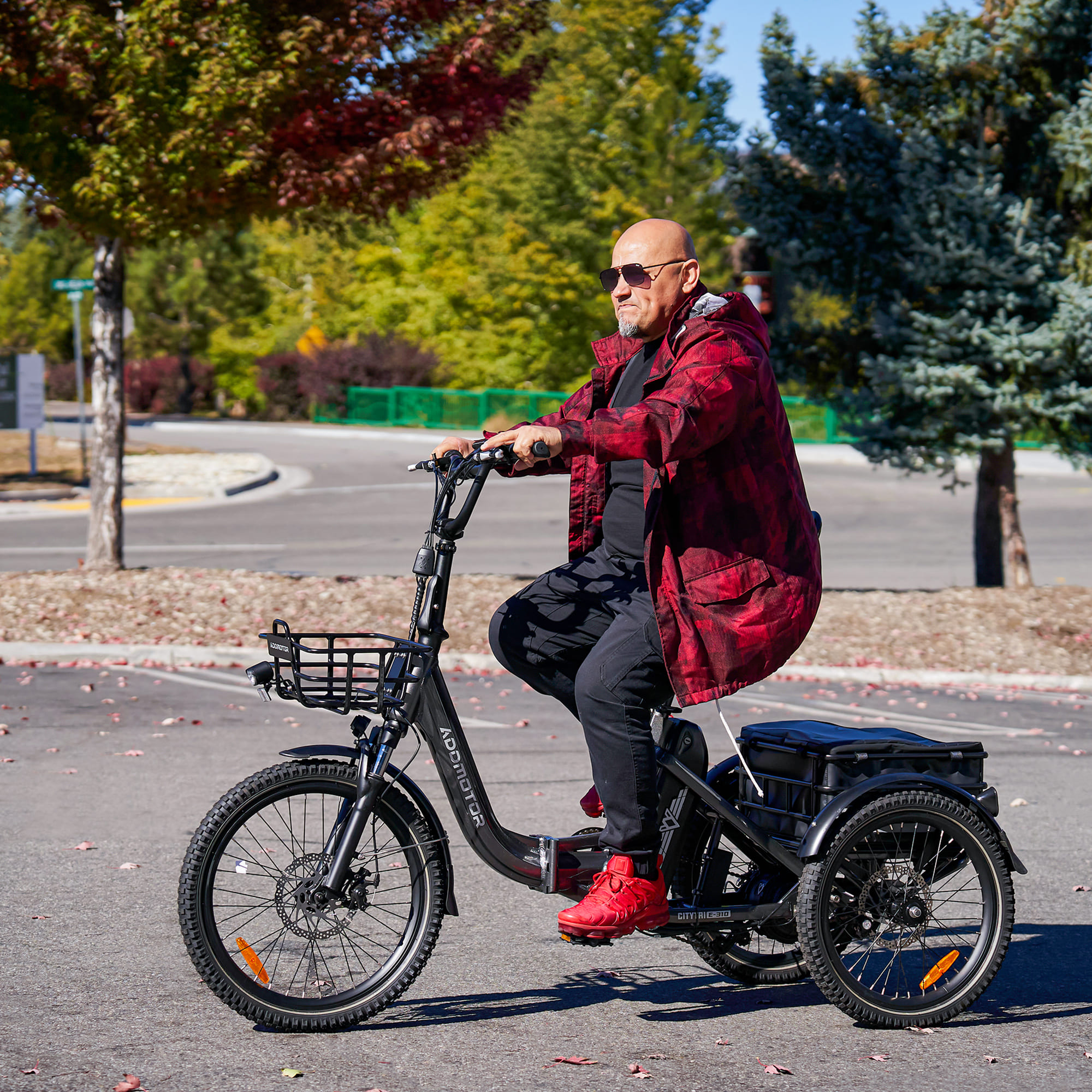ADDTECH | Best 21700 Li-ion Battery Brand-5000mAh
By Addmotor | 28 February 2024 | 0 Comments

More and more eBikes are hitting the streets in the US, and there are several reasons for this boom. One of these reasons is that eBike batteries are improving and providing more range per charge.
Currently, most eBikes have swapped 18650 Li-Ion cells for 21700s. At Addmotor, we have also switched to 21700s in our latest EB2.0 20Ah Kirin battery.
21700 Li-Ion cells are a significant improvement as they boast higher capacities. Whereas 18650 cells are limited to 3500mAh, 21700s have a maximum capacity of 5000mAh.
So, in this guide, let’s compare two of the biggest manufacturers of 21700 Li-Ion cells: Samsung and LG.
Comparing The Battery Cells
| Specs | LG 21700M50T | SamSung INE21700-50E |
| Capacity | 5000mah | 5000mah |
| Weight (max.) | 70g | 69g |
| Charging Voltage/Nominal Voltage | 4.2V/3.6V | 4.2V/3.7V |
| Charging Current (standard charge) |
1,455mA | 2,450mA |
| Charging Time (approx) |
4 hours | 3.5 hours |
| Max. Charge Current | 3395mA | 4,900mA |
| Max. Discharge Current (for continuous discharge) |
14.55A | 9.8A |
| Initial Internal Impedance | ≤25mΩ | ≤ 35mΩ |
| Cycle Life | After 300 cycles (80% of the initial value) | After 500 cycles (80% of the Rated Discharge Capacity @ RT) |
| Operating Temperature | Charge : 0 to 45°C Discharge : -20 to 55°C |
Charge : 0 to 45°C Discharge : -20 to 60°C |
♦ Weight Comparison
The weight of a single 21700 battery is almost the same, regardless of the brand. For instance, the LG battery weighs 70 grams (0.154 lbs) and the Samsung battery weighs 69 grams (0.152 lbs).Let's take the Addmotor EB 2.0 Kirin battery pack (48V 20Ah) as an example. It uses Samsung INE21700-50E cells (3.7V 5Ah).
To make a 48V battery pack, we need to connect cells in series. The number of cells in series is calculated by dividing the target voltage by the individual cell nominal voltage. That is:
Number of cells in series = Target voltage / Individual cell nominal voltage = 48V / 3.7V ≈ 12.97 (rounded up to 13 cells).
We round up this number to 13 cells, since we cannot use a fraction of a cell.
To make a 20Ah battery pack, we need to connect cells in parallel. The number of cells in parallel is calculated by dividing the total capacity by the individual cell capacity. Considering that each cell has a capacity of 5000mAh (i.e. 5Ah), then:
Number of cells in parallel = total capacity / individual cell capacity = 20Ah / 5Ah = 4
So, to build a 48V, 20Ah battery pack, we need four 5Ah cells connected in parallel, and then 13 groups of these parallel cells connected in series. The total number of cells is 52 cells. The minimum weight of the battery pack is the total number of cells multiplied by the weight of one cell. Assuming the heaviest cell is 70 grams, we get: 52*69g = 3,588g ≈ 7.91 lbs.
The actual weight of the Addmotor EB 2.0 battery pack is about 9.5 lbs, which includes the weight of the protective housing and the connecting materials.
♦ Charging Characteristics
At the same capacity, voltage range, efficiency, and algorithm.
That said, the charging currents can vary dramatically. For LG it's 1455mA, whereas Samsung has a higher value of 2450mA. The higher charge current means that the Samsung cell can charge faster.
Similarly, Samsung has a higher maximum charge current of 4,900 mA compared to LG's 3395 mA. So when charging when the voltage is very low i.e. 20-40 % charge, the Samsung cell will charge faster.
This is also evident when comparing the approximate charging times. For the LG battery cell, it takes around 4 hours whereas the Samsung can reach a full charge within 3.5 hours.
♦ Discharging Characteristics
The CDR, or the continuous discharge rate, is the maximum current that a battery can deliver continuously without damaging itself or reducing its capacity. The higher the CDR, the more power the battery can provide, but also the more stress it puts on the battery.The CDR affects the battery cycle life, which is the number of times a battery can be fully charged and discharged before its capacity drops below a certain level. The higher the CDR, the faster the battery degrades, because it causes more heat generation, electrode erosion, electrolyte decomposition, and side reactions.
So far, the Samsung cell has been the better option in terms of charging characteristics. However, LG takes the spot when comparing the maximum continuous discharge rate (CDR).
Here, the LG cell boasts a value of 14.55A over Samsung's measly 9.8A. So, if you're looking for a 21700 cell that can provide more power consistently, the LG cell is the best bet.
However, this does come with long-term implications, as you'll soon see with the battery cycle life.
♦ Initial Internal Impedance
The internal impedance (or resistance) gives a solid idea about the range, efficiency, and temperature output of the Li-Ion cell. The lower the internal resistance, the more efficient the cell.Here, we can see that the Samsung cell has a maximum internal resistance of 35 mΩ. Meanwhile, the LG cell has a lower maximum value of 25 mΩ.
However, at Addmotor, our EB 2.0 battery pack includes gold-plated contact pins and an overcompensating battery protection board. It includes 3-channel discharge and 2-channel charge protection, and a 14X MOS IC for safe and efficient power switching.
♦ Cycle Life
eBike batteries degrade over time and won't be able to maintain the same amount of capacity. Therefore, after 2-3 years of regular use, or 300-500 charge cycles, their effective capacity tends to drop to around 60-80%.In this comparison, we can see that the LG cells have a cycle life of 300, after which the effective capacity drops down to 80%. The Samsung cell fares much better as it can survive almost 500 cycles before it starts to show signs of degradation. The charging cycle of the Addmotor EB 2.0 battery pack is 1,000-1,500.
♦ Operating Temperatures
The operating temperature range helps specify the temperatures where the Li-ion cells are most efficient and safe to use. Bypassing these ranges will lead to reduced efficiency. On top of that, it could start fires, leak electrolytes and degrade the cycle life of the battery.Both cells have a charge temperature range of 32 to 113°F (0 to 45°C). The Discharge temperature range is very similar with Samsung boasting a range of -4 to 140°F (-20 to 60°C).
Our Addmotor EB2.0 battery pack has taken things even further. It’s got a 5-piece temperature control system to maximize rider safety and ensure the battery pack is not affected by extreme temperature changes.
Conclusion
Samsung and LG are both high-end manufacturers of 21700 Li-ion cells. The LG cells can provide more current continuously without fail. However, the Samsung cell has a longer cycle life and faster charging characteristics, making it the ideal choice for our EB 2.0 Kirin battery pack.Leave a Reply
Your email address will not be published.Required fields are marked. *
Latest Stories




